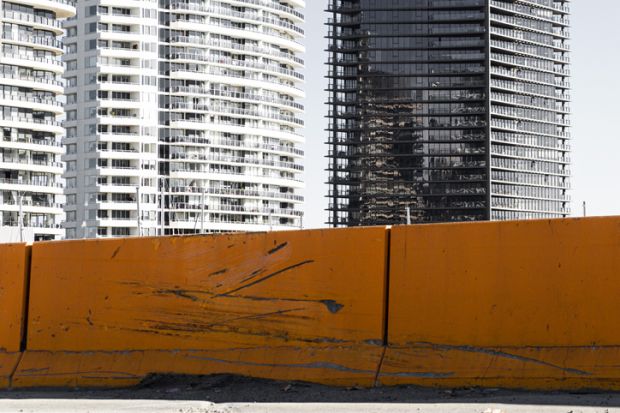Shared housing is “severely unaffordable” for students in Sydney or Canberra and “unaffordable to moderately unaffordable” for those in other Australian cities, with rental properties almost impossible to find – and out of reach for most students who manage to find them.
A new report says students face a choice between rental stress and a life spent largely in transit, as they battle to put roofs over their heads. The Rental Affordability Index report, produced by consultants SGS Economics & Planning, ranks the “student sharehouse” among the most disadvantaged types of households alongside examples like “pensioner couple”, “hospitality worker” and “single part-time worker parent on benefits”.
Students who share dwellings in Canberra forfeit an average of 40 per cent of their income in rent, with those in Sydney handing over 38 per cent. Rent consumes at least one-quarter of the incomes of students sharing apartments or houses in most regional areas, rising to 33 per cent in Hobart, 31 per cent across Queensland and 28 per cent in Adelaide, Melbourne and Perth.
The figures are modelled on households of three students who receive federal government income support payments supplemented with the maximum they are entitled to earn in part-time wages before losing some of their benefits – adding up to a total income of A$28,186 (£15,783) each.
These assumptions almost certainly overstate the financial position of many students, because only around one-fifth of those aged under 22 are eligible for income support.
The report says many students cannot afford to live in the “high-rent” city centres where many campuses are located. Consequently, students expend time and money travelling to campus. And they shoulder the risk of tenant turnover, forking out extra rent when rooms fall vacant.
While stocks of affordable housing in Australia have been declining for years, the report says natural disasters and the Covid-19 pandemic have made things worse. Widespread bushfires in 2020 and flooding in 2022 have affected “existing rental stock and new development, limiting supply and increasing rental rates. This has been compounded by an influx of regional migration driven by Covid-19 restrictions in capital cities.”
Expatriates returning home during the pandemic have also snapped up rental properties, while many inner urban apartments are kept vacant by investor owners who are focused more on capital gains than rental returns.
A Sydney forum heard that universities were being forced to “re-energise their housing strategies” as they realised that private sector developers may no longer have the capacity to accommodate their students.
Paul Savitz, director of operational capital markets with property agency Savills, said domestic students were turning to purpose-built student accommodation – an option normally favoured by international learners – because private housing was “very, very difficult” to find.
“A lot of the alternative residential accommodation that students used to live in has been taken out of the market,” Mr Savitz told a Student Accommodation Association industry lunch at Sydney’s Parliament House. “Very tight residential markets” were boosting the “propensity” of domestic students to seek student accommodation, forcing universities to consider building their own housing blocks.
Mr Savitz said a new residential building at the University of Queensland, which accommodates a little over 600 students, had a “waiting list” of about 1,500.
Register to continue
Why register?
- Registration is free and only takes a moment
- Once registered, you can read 3 articles a month
- Sign up for our newsletter
Subscribe
Or subscribe for unlimited access to:
- Unlimited access to news, views, insights & reviews
- Digital editions
- Digital access to THE’s university and college rankings analysis
Already registered or a current subscriber? Login








